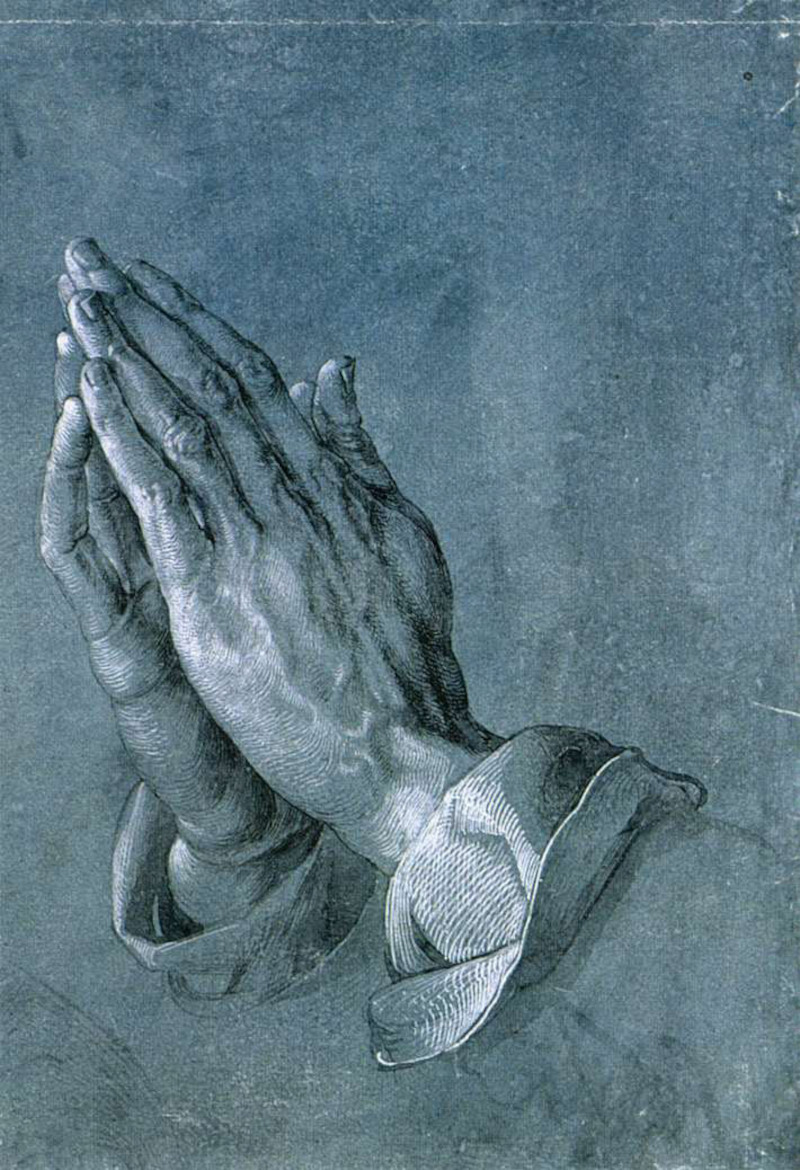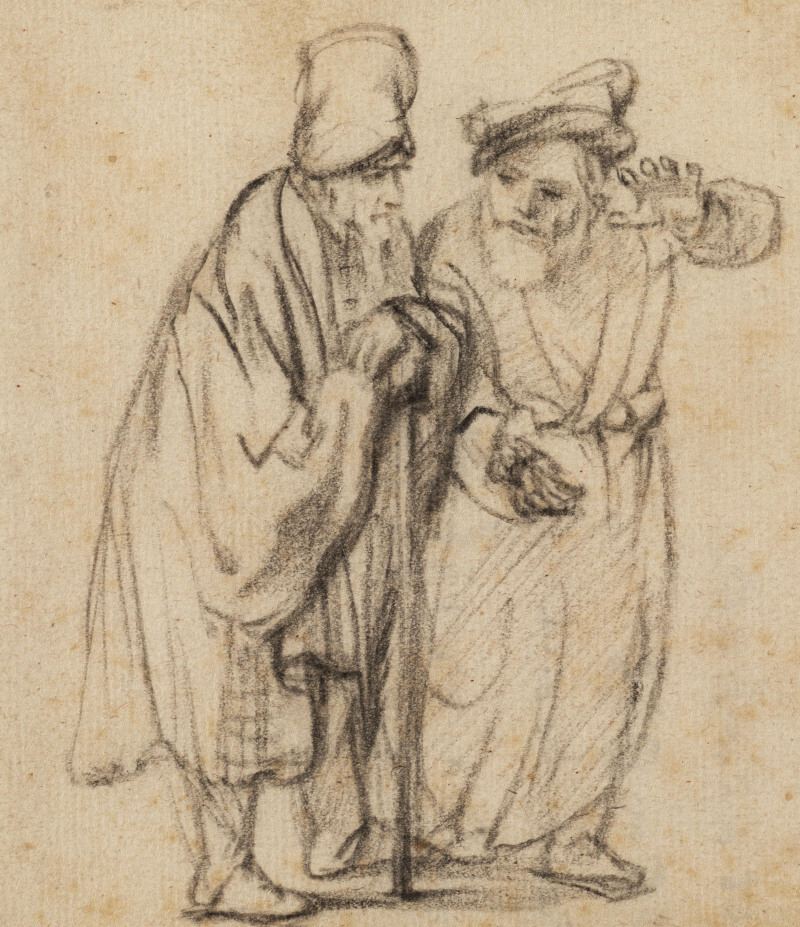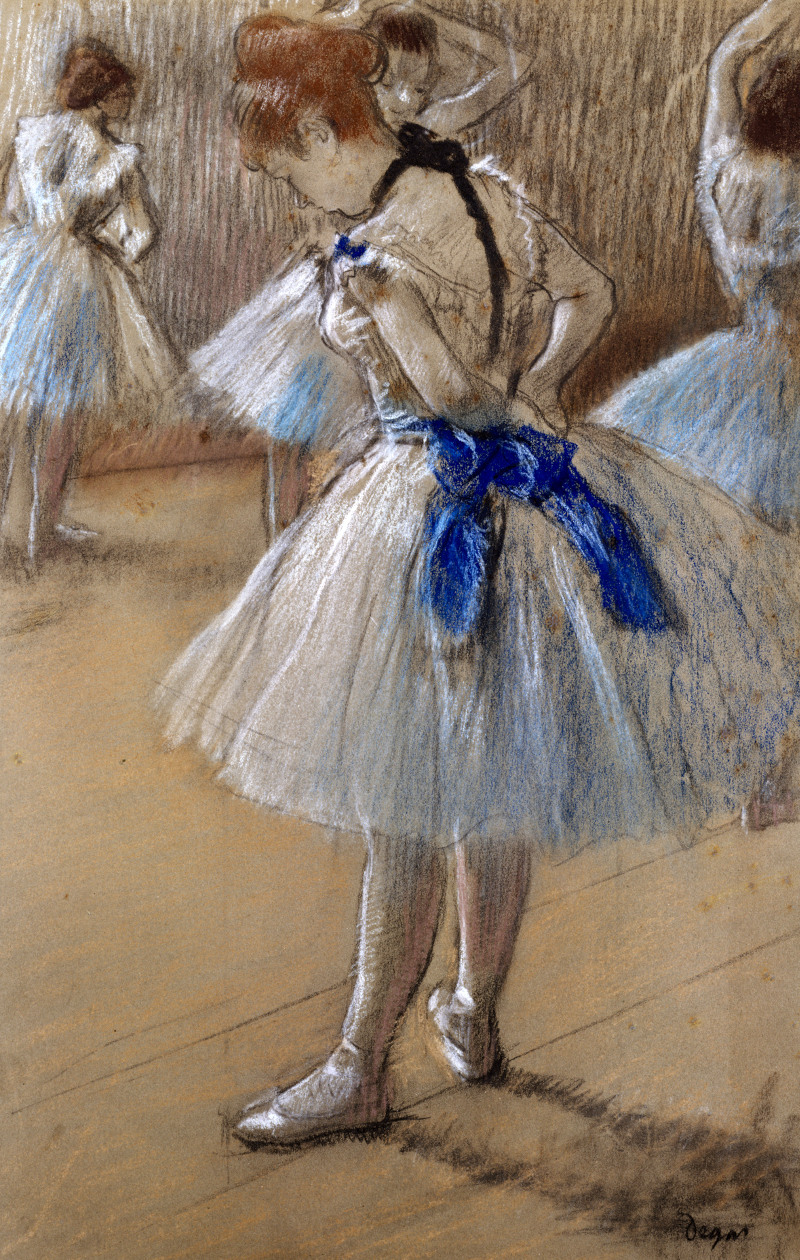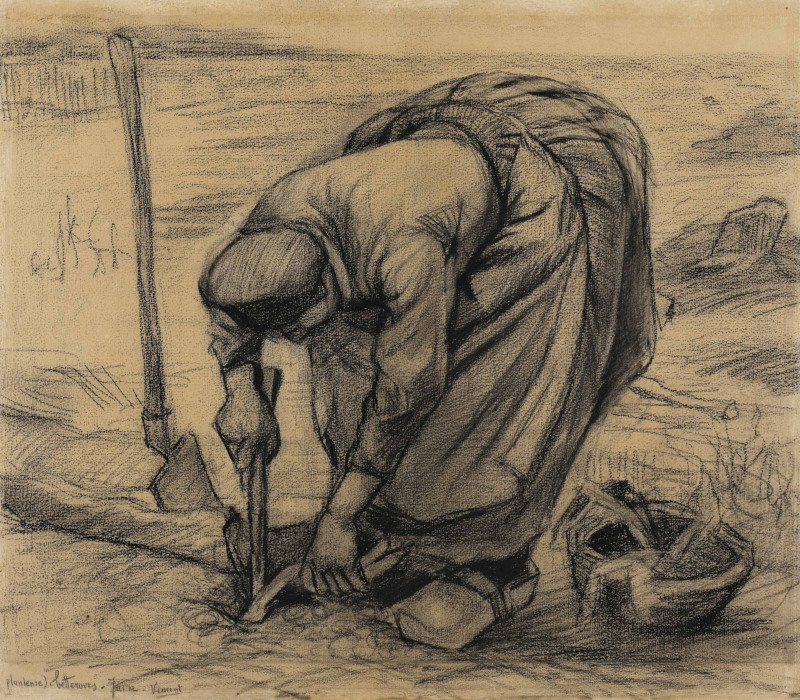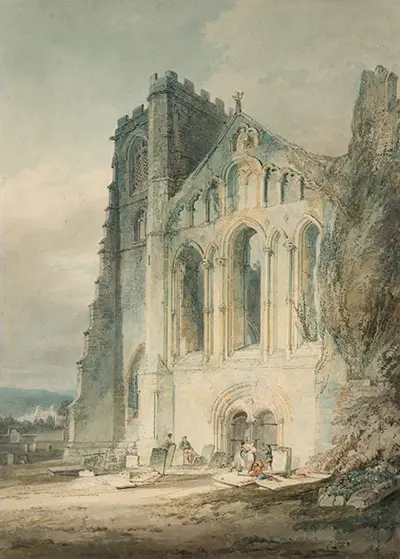Discover the most famous drawing artists in this extensive article which examines the importance of draughtsmen and women within art, and the different techniques and styles used.
Introduction - Drawing Artists to Admire from the Realms of Art History
The earliest stage of artistic study and development for most artists is drawing. The finest academic courses provide rigorous training in the basics of drawings in order to provide their students with the necessary skills required to then take on other mediums such as painting, sculpture and architecture.
In order to understand the breadth of styles found within this medium, we have put together a list of some of the most influential draughtsmen and women in history. They all understood the importance of practice, even when naturally talented themselves. One can also understand how their paintings would be put together, with drawing often appearing in its earliest stages of development.
List of Famous Drawing Artists (Draughtsmen/Draughtswomen)
We have collated a list below of the most famous drawing artists from the past few centuries, dating back to the early Renaissance. The main focus here is on western artists, but clearly there were many other impressive sketch artists to be found elsewhere. The list includes examples drawings from each artist's career, and a short explanation about their work.
Whilst some artists specialised in drawing, most of those featured in this article would use sketching as a preparatory phase for paintings or sculptures. They would also produce some sketches just for the fun of it, or perhaps to observe something particularly closely. It has been difficult for any artist to achieve fame just from drawing, which is why those listed here are predominantly known as painters, sculptors and architects.
Michelangelo
Michelangelo is considered by some to have been the most gifted anatomical draughtsman in history. He studied the human body in great detail, observing every last detail in order to make his drawings as accurate as possible. He would sit and sketch for hours, filling page after page with an assortment of muses, some of which were completed to a high level of detail, with shading throughout.
This great Italian master would use different tools for his work, with charcoal and chalk being common choices in the Renaissance era. Pen and ink were also prominent throughout Europe, though much depended on the purpose of each drawing as to which one would be utilised. Michelangelo would also sketch outlines to compose his paintings, during their early stages of development.
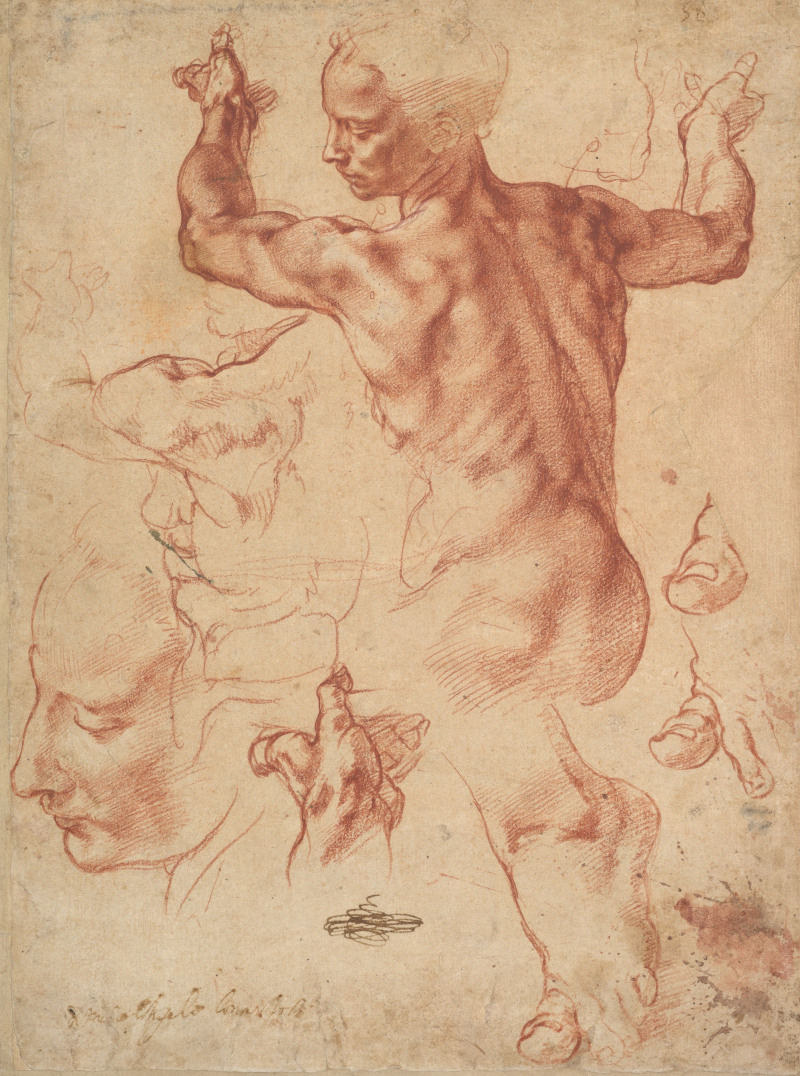 Studies for the Libyan Sibyl Michelangelo Drawing
Studies for the Libyan Sibyl Michelangelo Drawing
Leonardo da Vinci
Leonardo da Vinci produced a wide variety of work within his career, and drawing made up an important part of that. It laid behind his exciting inventions, for example, as well as helping him to prepare for some of his famous portraits. He was just as curious as Michelangelo, and loved to observe all manner of different objects in order to better understand them.
The artist produced a number of highly complex figurative works which could not be completed simply be working directly on wood panel or wall without some series planning. He would therefore handle sections at a time through study drawings, and then put his ideas together in the final piece. Fresco work required fast activity, with little opportunity for alterations.
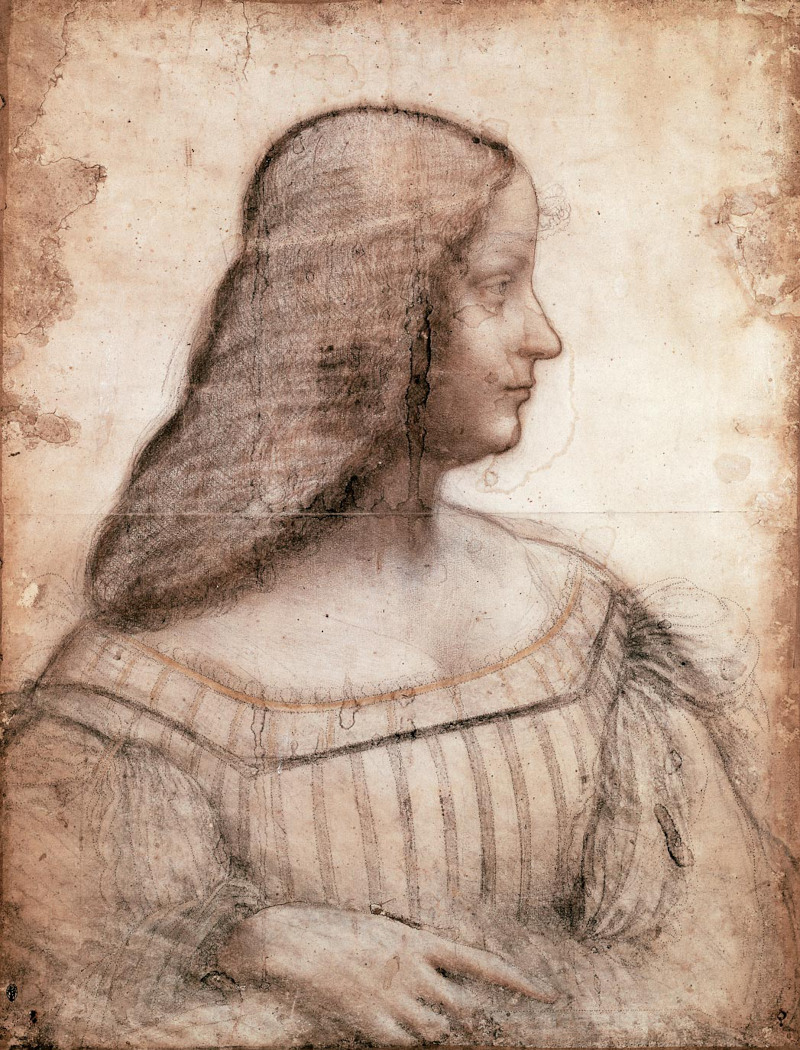 Portrait of Isabella d'Este Leonardo a Vinci Drawing
Portrait of Isabella d'Este Leonardo a Vinci Drawing
Pablo Picasso
Pablo Picasso loved to sketch animals and birds using minimal detail, sometimes just a single line of the pencil. It underlined his mastery, to create something recognisable with such a minimalistic style. He covered many animals, some of which were portraits of his own pets, such as Lump the Dog.
Few artists have been as naturally gifted as Picasso, and his contemporary style was relatively free and expressive. He was trained in traditional techniques, but loved to embrace simplicity, which enabled him to produce several artworks per day. He remains regarded as one of the most famous line drawing artists in history.
.jpg) Pablo Picasso Line Drawing (Flamingo)
Pablo Picasso Line Drawing (Flamingo)
Gustav Klimt
Gustav Klimt, a Vienna Secessionist, is most famous for his elaborate figurative paintings, many of which were drenched in stunning gold leaf paint. Behind this beauty, though, was a highly skilled draughtsman who also completed a large number of portrait drawings which made use of minimal detail, focusing on outline and careful observation.
In order to master figurative art, Klimt realised the need to practice regularly. He would hire his own models and capture them in different poses whilst planning his major commissions. Many of these drawings were kept for later study and can be considered worthy artworks in their own right.
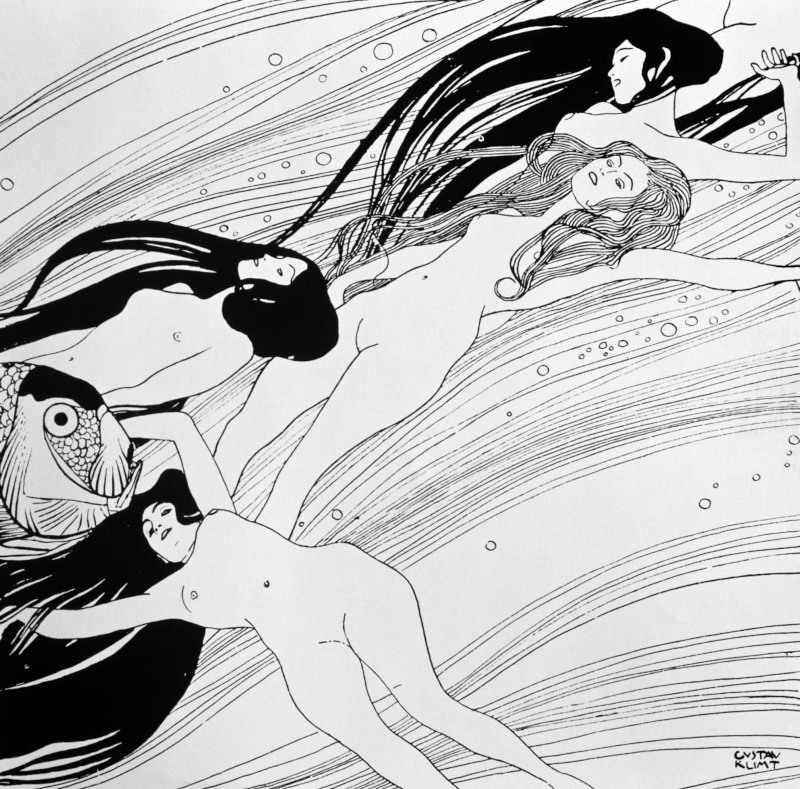 Fish of Blood Gustav Klimt Drawing
Fish of Blood Gustav Klimt Drawing
Egon Schiele
Schiele worked in a similar manner to Klimt in terms of their drawing, using reduced detail and focusing most on outline and observation. Schiele's paintings were relatively similar to his drawings, essentially evolving his strokes of chalk and pencil with additional details and color.
The small oeuvre of Schiele, due to his untimely death, has made his drawings all the more important. Those looking to learn the techniques of drawing portraits can study his minimalist approach to understand how he put his figurative work together, and potentially gain some inspiration for their own work.
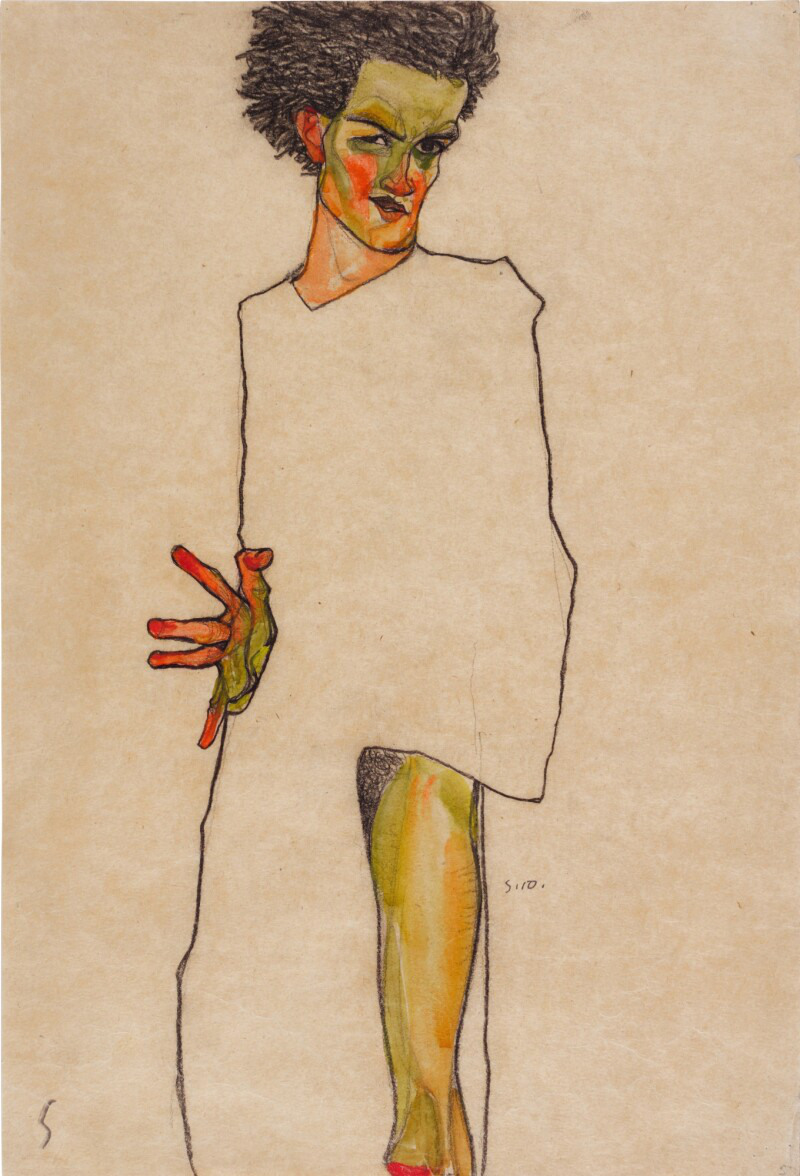 Self Portrait Egon Schiele Drawing
Self Portrait Egon Schiele Drawing
Charles Bargue
Charles Bargue was a French painter who developed a drawing course alongside Jean-Leon Gerome which continues to be used today. It is perhaps this for which he is best known today, and the course provides its students with an excellent foundation in the techniques of academic drawing. In providing this as a published book, he opened opportunities up to those who could not afford personal tutoring.
Despite all of the contemporary art movements which appeared across the 20th century, the techniques of drawing are still considered an important introduction for art students. Bargue's drawing course is therefore entirely still relevant, and has been re-printed on multiple occasions.
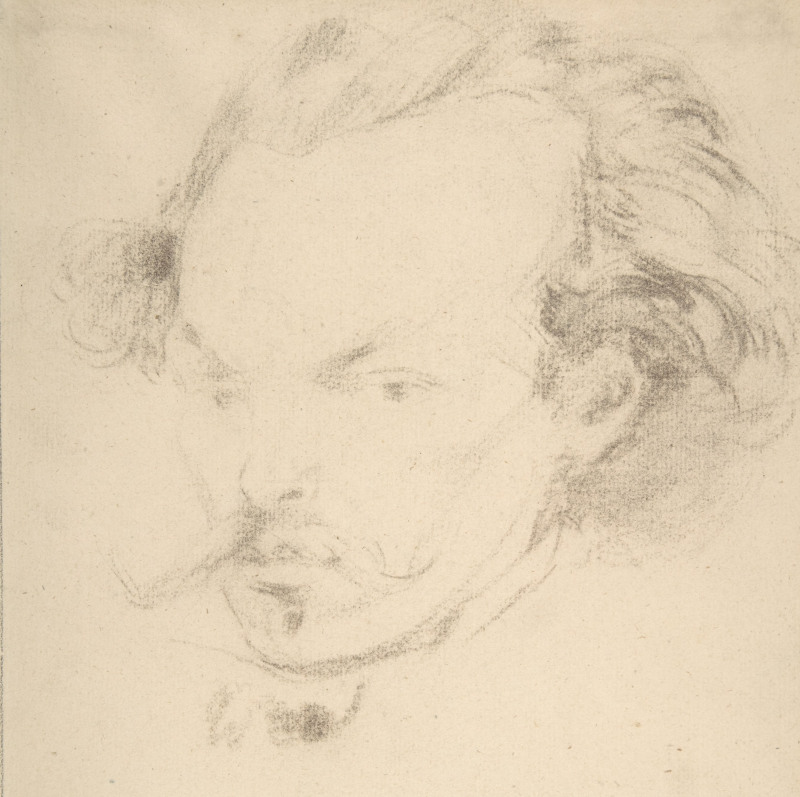 Charles Bargue Self Portrait Drawing
Charles Bargue Self Portrait Drawing
Albrecht Durer
Durer was an extraordinary artist, helping to bring printmaking techniques into European art as major interest. He took on engravings and woodcuts, which took advantage of his existing skills in drawing. The level of detail that he incorporated into his works was memorable, and led to him becoming regarded as a true master of the Northern Renaissance.
Durer's studies of animals and plants were charming, but his oeuvre is hard to summarise because of the breadth of content that he covered. There were coat of arms sketches, portraits, botanical sketches, as well as many series based on religious themes such as the Life of Christ.
.jpg) Praying Hands, pen-and-ink drawing (c. 1508)
Praying Hands, pen-and-ink drawing (c. 1508)
Rembrandt
In a similar manner to Durer, Rembrandt is best remembered as a painter, but actually achieved a large amounts of success in other mediums. He practiced portraits in the drawing medium, and also released a large number of etchings. He loved to implement incredible detail into his work, making the most of what some considered to be relatively limited art forms.
As with many of the best, and most productive artists, Rembrandt did take on most major genres within his oeuvre, including religious themes, portraits and landscapes. His obsession with collecting art from other major names meant he had to continue working throughout his life in order to finance this expensive past time.
Eugene Delacroix
Delacroix was a classically trained artist who produced a large number of study drawings for his complex paintings. He produced animal drawings, as well as figurative pieces for his history paintings. Delacroix tended to prefer ink drawings, which were faster and more expressive, which suited his role as a Romanticism artist.
Delacroix covered many animals, including lions, at a time when it was not easy to access and study such creatures. He therefore brought the beauty of these creatures to the attention of the public, and also travelled abroad to depict other cultures as his curiosity led him to take foreign tours.
.jpg) Tiger by Eugene Delacroix (Pen and brown ink, and watercolor, over graphite)
Tiger by Eugene Delacroix (Pen and brown ink, and watercolor, over graphite)
Claude Monet
Claude Monet was the figurehead of the Impressionist movement, and achieved much in a variety of mediums. Many are unaware of his success as a draughtsman, including chalk, charcoal and pastels. The latter brought in color options that better suuited the Impressionist era, as compared to the darker tones of black chalk and charcoal.
Monet focused on two main genres within his career, namely figurative portraits as well as landscape scenes. He would sit in his garden in Giverny and study the environment around him, all of which he had carefully curated over a number of years.
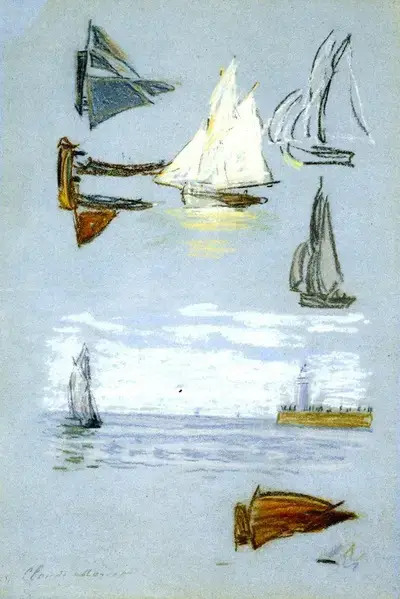 Study of Sailboats and Harbour Claude Monet
Study of Sailboats and Harbour Claude Monet
Edgar Degas
In a similar manner to Monet, Degas produced large amounts of study drawings, some in charcoal and chalk, and others in pastels. He was focused on figurative art and loved to observe ballet dancers in all manner of different poses. Some of these drawings were preparation for oil paintings, whilst others would fill sketchbooks that he would refer to for general interest.
Those looking to learn the techniques of figurative drawing will often study the work of Degas, who left behind large numbers of studies, in a variety of colors and levels of detail. His career offered something different within the Impressionist movement, and he also took on racecourse scenes as well.
Vincent van Gogh
Few artists have worked as obsessively and relentlessly as Vincent van Gogh, as he was driven by a desire to hide his mental health issues. His focus on his work helped to block out any other problems in his life, and so he would leave behind a huge body of work despite only having a relatively short career.
The use of pen and ink allowed Van Gogh to work without his large canvases and collection of oils, enabling him to access his creativity whenever he wished. Many of his famous paintings have a drawn alternative, as the artist laid out his initial ideas. Although not technically and academically trained, these drawings display his impressive natural talent which laid behind his success.
Élisabeth Vigée Le Brun
Élisabeth Vigée Le Brun is one of the most famous draughtswomen, and specialised in portraiture, as preparation for her impressive oil paintings. The notable names included in her oeuvre helped to raise her reputation, but most of her success was based on the technical qualities of her work.
Additionally, two other notable female drawing artists were Mary Cassatt and Berthe Morisot who themselves were in the Impressionist movement. They may well have been inspired by fellow female artists such as Le Brun, who appeared many years earlier and helped to break some of the barriers that female artists continued to battle against.
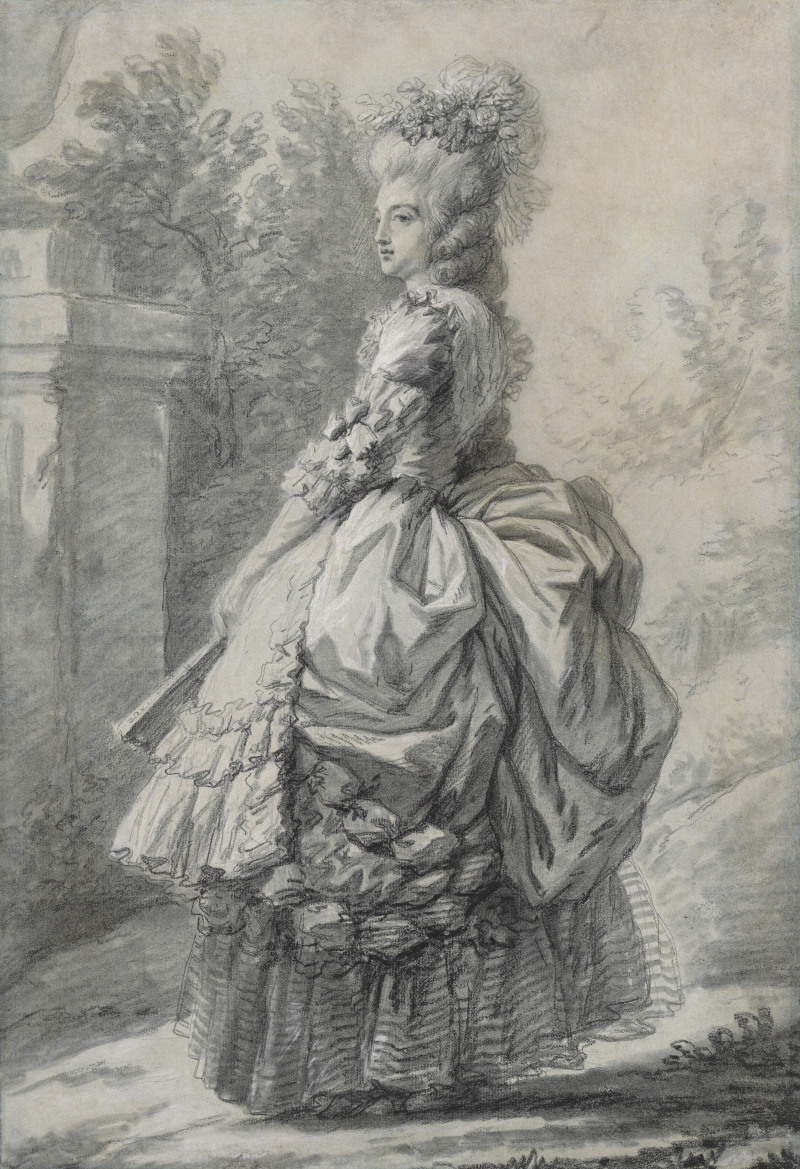 Marie Antoinette in a Park Élisabeth Vigée Le Brun drawing
Marie Antoinette in a Park Élisabeth Vigée Le Brun drawing
JMW Turner
William Turner travelled around the UK sketching various landscapes which would later be turned into stunning oil paintings. He later took his talents abroad and found exciting new landscapes around Europe, including Venice. His sketchbooks were filled will drawings in pen and ink, charcoal and chalk.
As he sought to take his talents as far as they could go, Turner also worked with watercolors too, which suited his landscape content and also fitted well with his talents as a draughtsman. He became a key member of the Romanticism movement, helping to inspire the French Impressionists.
Peter Paul Rubens
Rubens was a gited Baroque painter, who oil based work was incredibly detailed and complex. He was able to achieve such compositions through regular practice as a draughtsman. Many of his portraits were reduced in color in order to get the basics right, prior to starting the main painting. He also could work quickly with sketches, which helped when hiring models.
Rubens was just one of a number of exceptional artists from the Netherlands and Belgian regions, who were highly influential in European art, even though most continue to focus on the achievements of the Italian Renaissance.
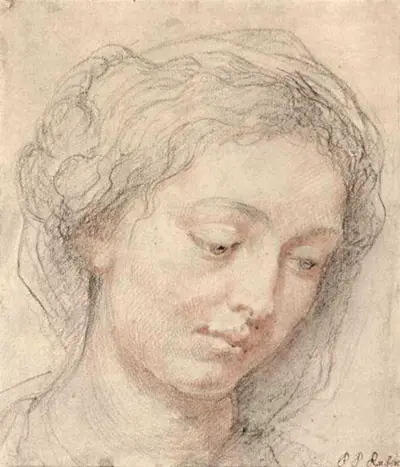 Head of Woman Sketch Peter Paul Rubens
Head of Woman Sketch Peter Paul Rubens
The Influence of Drawing Masters: Impact on the Art World
The masters influenced other artists through their use of line and perspective, when discussing the drawing medium. They used a variety of techniques to improve the accuracy of sketching, and eventually it would become a respected art form in its own right. Collectors would start to purchase the masters' drawings, when previously such artworks would have had no value.
The raw nature of this art form also makes them far easier to understand and dissect, from a technical point of view. A close observation reveals their various techniques, such as crosshatching, which will encourage others to try out the same methods. Many of the masters would also spread the scope of drawing, allowing artists to consider sketching all manner of different content, rather than being restricted to religious content as had previously been the case.
As an additional note, many of the masters would pass drawings around their studio, giving their students an excellent insight into their work. This helped to pass techniques on to the next generation, particularly when these pupils were at the very start of their careers.
Sketchbooks and Studies: Unveiling the Creative Process of Famous Artists
Sketchbooks have provided a valuable insight into the work of famous draughtsmen and women over the years. Artists have made use of them for a variety of reasons, normally due to the ease with which they can be carried around. Oil painters struggle with the large, heavy tools needed for their work, which also removes much spontaneity from their careers.
Drawing artists can take a sketchbook with a few drawing tools in a small bag, or even in their coat, and can therefore work at anytime, giving them the opportunity to travel to all manner of different environments. For landscape painters, the benefits are most significant, as working outside can be difficult, particularly for those who want to travel to remote locations and discover locations that few artists have ever covered before.
Those looking to work in greater detail, they would normally prefer to remove the sleeve of paper from any bound book and work on it independently. This would also give them the option of gifting the final artwork to a friend or family member. Sketchbooks may also include similar content at different levels of completion, as the artist works through their ideas, slowly making each iteration a little more evolved than the last.
A Legacy of Teaching: Famous Drawing Artists as Inspirational Mentors
The masters invariably took on huge commissions as their reputations soared and in order to match these demands they were forced to employ large studios of assistants. In order to ensure that the standards did not drop, the masters had to spend considerable time in teaching and training their employees. Many also understood the traditions of art schools, where established artists would pass on their knowledge, and so felt obliged to do this.
Such a process of mentoring was common in the Italian and Northern Renaissance, and continued for centuries afterwards. Many would pass their drawings around, enabling others to quickly understand the methods that they used in terms of composition, perspective and more. Passing on the techniques of painting and sculpture was a much harder process.
There was a difficult balance to be struck between instilling a consistent approach across the studio, so that commissions were seamless, whilst also encouraging a certain level of creativity and innovation to avoid artists feeling like they were merely part of a production line.
Drawn to Nature: Famous Artists and their Reverence for the Natural World
Nature contains an almost infinite variety between species. Artists have loved to draw many of these differences, such as sketching trees in an attempt to understand the differences between each type. They would do likewise with other plants, including still life studies where a flower may be placed on the desk.
Artists will also sketch the angles of specific environments, such as a mountain range, before completing oil paintings from the comfort of their studio. Animals are amongst the biggest challenges, and an accurate reproduction of any animal requires considerable observation.
Famous drawing artists would go to extraordinary lengths in order to ensure the accuracy of their work, including cutting open corpses, as well as camping in the wilderness for months at a time - this was particularly the case with members of the Hudson River School who were obsessed with capturing the beauty of the North American landscape.
Inspiring Artists: Exploring the Masterpieces of Drawing Legends
We have collated a list below of the most famous drawing masterpieces, from many of the best draughtsmen and women in history. Most will relate to the artists listed in this article, and also provide an excellent summary of the different styles and techniques that they have used from the Renaissance era up to modern art.
- Lump by Pablo Picasso
- Self Portrait in Chalk by Leonardo da Vinci
- Sketchbook series by JMW Turner
- Pastel studies on ballerinas by Edgar Degas
- Studies of Lions by Eugene Delacroix
- Self Portrait sketches by Rembrandt
- Praying Hands by Albrecht Durer
- Klimt and Schiele's Portrait Pencil Sketches
Unveiling the Secrets: Techniques and Styles of Renowned Drawing Artists
Many drawing techniques have been developed over the years, with some of the most well known including crosshatching, the grid technique, linear perspective, gesture drawing and calculating human proportions. Many other uses of lines have been used to produce different effects, including shading, lighting, depth and more.
Other discoveries would have reached through practice and experimentation. Working alongside colleagues would share ideas, and taking different content on from different angles would reveal all manner of different things. Finally, the use of different tools each brought their own advantages, with new options appearing in every century.
The Evolution of Drawing: Influential Artists Who Shaped the Artform
Drawing as evolved over the centuries. Early cave paintings resemble abstract art of today, but it was the rise in the use of paper which led to drawing becoming more prevalent. In today's world we have sketching on digital devices, but for most of the time artists would use pencils, charcoal, chalks as well as pen and ink. Techniques have also evolved, with new ideas being passed on.
The likes of Da Vinci and Michelangelo were amongst the most talented and innovative in this medium, putting considerable amounts of time into it. They can therefore be considered the most influential drawing artists of all time.
From Sketch to Masterpiece: Examining the Creative Process of Famous Artists
The great masters have had their work examined to an extraordinary level. Individuals in their portraits have been identified, paintings that were later worked over have been uncovered through x-ray research, and collaborative pieces have been correctly attributed after monnths of research. The working processes have also been discussed at great length, and original drawings have provided amongst the most useful clues to their working practices.
Some have worked in the tried and tested formula of working drawings first, before completing oil sketches, before then moving on to the main artwork. This ensured fewer amendments would be made in the latter stages, and the need for these preparations was based on the type of content used. Figurative work was particularly complex, where any mistakes could be spotted by even the most casual of art followers.
The Captivating World of Portraits: Legendary Drawing Artists and their Subjects
Portrait drawing is a common practice for most painters - its inherent difficulties require constant practice and study. The likes of Rubens would practice their portraits frequently, but in previous centuries it would be more about anatomical studies, because of how portaiture was less significant than religious paintings.
In recent times, contemporary drawings have reduced detail and moved towards abstraction. This has brought its own challenges, with the likes of Matisse and Picasso having to create form out of just a few lines or splashes of color.
The Enduring Appeal: Famous Drawing Artists Whose Works Stand the Test of Time
Many of the drawings featured in this article continue to be celebrated and studied today. Few can look beyond the great masters when seeking to understand the techniques of drawing, even though their success came many centuries ago. Articles on these masters' careers will often feature drawings alongside their paintings in order to better summarise their talents and achievements, when previously they may have been ignored.
The drawings listed in this page are also only a handful of what can be found in the realms of art history, and a number of comprehensive publications have ensured that more of the great drawings of the past remain in our memories for years to come, particularly with regards the Renaissance masters.
Drawing as Social Commentary: Famous Artists Addressing Important Issues
Drawing can be an excellent tool for getting simple messages across at speed, making the art form an excellent option for artists looking to dabble in social commentary. In the present day, we have more artists involved in activism than ever before, and many of them will be in the younger generations who will also be able to leverage the opportunities given to them by modern technology as well.
The raw nature of drawing can also help to produce art that many can connect with, even those who may not always be interested in formal art. More complex methods may simply not be effective in spreading the message, how well technically they have been put together.
Drawing in the Digital Age: Famous Artists Embracing Technology
Digital art offers the last evolution in the techniques of drawing artists. Many advancements have been made in recent years, one of which has been in how artists have been able to draw via their mobile phones, making the medium even more accessible than before. Additionally, artists can collaborate across nation states, or even on a global scale, by sharing their drawings with friends via the internet.
Drawing via digital tools is relatively new, and potentially there is much more room for advancements. Newer tools may appear, AI could be involved, and virtual reality may also impact the way in which drawings are completed. Some exhibitions in recent years have included elements of digital art, including photography as well as paintings and drawings produced on tablets and mobile phones.



